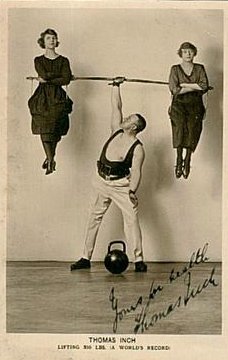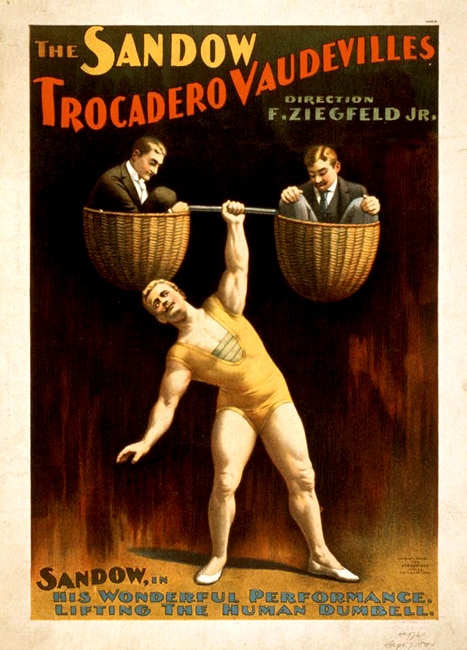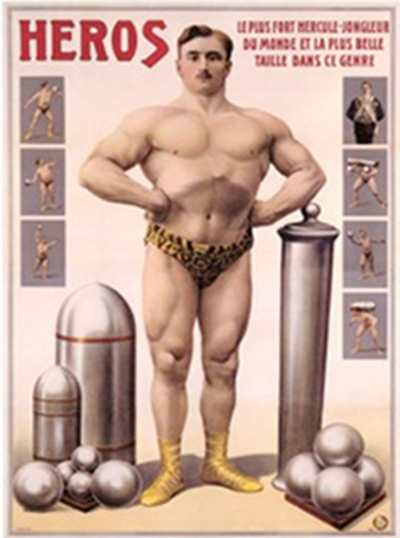
Editor’s Note: This is a guest post from Anthony Yeung.
In our quest to sculpt a powerful and masculine physique, balance and stability are often overlooked. Sure, we want to add plates to the bar, grunt, and move heavy objects – but if our fitness rests atop wimpy foundations, we’ll limit our strength and make ourselves prone to injury.
By using just one limb (known among fitness geeks as “unilateral training”), however, we can build a strong body and develop balance and stability at the same time.
Unlike exercises like squats, deadlifts, and bench presses where both limbs work at the same time, unilateral training splits the body into left and right halves and strengthens each arm or leg independently. This gives us two distinct benefits:
1. It reduces injury risk.
Training on just one leg can help guys who have disc issues or back pain by reducing sheer stress and saving your joints. When you do single-leg exercises, you can’t push or pull as much weight, which decreases the compressive forces on the spine. If you can squat 300 lbs, for example, and can only split squat 120 lbs, you just spared your back 180 extra pounds of force. Compounded over time, that’s a tremendous difference.
Using just one limb also fixes imbalances between your right and left sides. Have you ever heard someone say, “My right arm is stronger than my left”? Aside from being an easy joke, having that kind of asymmetry can cause injury. When one arm or leg is stronger than the other, it’ll bear more weight every time you squat or deadlift. The weaker limb won’t have a chance to catch up, and you’ll waste energy trying to make up for the difference. It also puts an uneven strain on your body, which further increases injury risk.
Finally, training just one limb adds some instability to your exercises to force the tiny, stabilizing muscles in your body to work harder. Often, these muscles weaken over time and can’t support bigger, more powerful muscles like the chest and hamstrings. By incorporating unilateral training into your workouts, you’ll strengthen those neglected stabilizers so you can move more effectively and safely during training and sports.
2. It helps you get strong and manly.
Training on one limb can help you pack on serious size and muscle. Even though you won’t use as much total weight, all that weight is focused on just one arm or leg, making the exercise just as hard – and often harder.
For example, if you did a single-leg squat with 60 lbs while weighing 180lbs, that’s 240lbs of load per leg. To spread that across two legs, you’ll need 480 lbs of load, which is equal to a 300-pound barbell – that’s a manly back squat! (And by fixing your asymmetries, activating your stabilizers, and building single-limb strength, don’t be surprised that your double-leg or double-arm exercises improve.)
It’ll also improve your athleticism. Running, for example, is a series of jumps from one leg to another. In fighting, you use each arm or leg independently. In fact, if you look at a lot of manly sports (i.e. football, rugby, and bear-wrestling), athletes always accelerate, jump, and slow down primarily on one limb.
Exercise Guide
These are several of my favorite unilateral exercises divided into lower body, upper body, and core work.
Lower Body
Split Squat
The split squat strengthens your quads, narrows your base of support, and forces your core and stabilizers to work extra. It also directs most of the weight onto your front leg, making it a great intro into single-leg training.
To make it harder, elevate your front foot to increase the range of motion, elevate the back foot to put more weight on the front, or — if you’re really manly — do both. Your legs will be screaming tomorrow.
Single Leg Squats
Face away from a box or bench, sit down, and stand up with just one leg.
Too easy? Lower the box or add weight by holding dumbbells or wearing a weighted vest. For an even greater challenge, do a single leg squat with no box!
Step Ups
Step onto a large box. Stay tall and be careful not to push yourself up with the bottom leg. Instead, pull yourself up with the top leg and drive through your heel.
Single Leg Romanian Deadlifts
It targets your hamstrings, glutes, and back muscles and also activates your knee stabilizers and core. By doing a deadlift on one leg, you’ll get a unique workout on your legs and hips that develops great strength without all the stress of heavy conventional deadlifts.
Upper Body
Single-Arm Cable Row
This is a great single-arm exercise that targets your back, shoulders, and arms. Set the handle to chest-height and row. To make it harder, move to a split squat stance or lift one leg up.
Single-Arm Dumbbell Bench
These fix the asymmetries that could be holding back your barbell bench press. They fire the stabilizing muscles in your shoulders and really target the core.
Single-Arm Dumbbell Press
Overhead presses have long been a staple of manly exercises – they build great upper-body strength and develop awesome size at your shoulders, traps, and arms. By using only one arm, however, you’ll get the same benefits of an overhead press while building balance and stimulating more tension at your trunk.
It’ll also help you build the physique of 19th century, Prussian bodybuilder, Eugen Sandow:

Core
Single-Arm Carries
Since the beginning of civilization, men have had to carry things over long distances – fresh kill, briefcases, women, etc. Who knew it could be such a great exercise?
Grab one dumbbell, stand straight, and walk. Because the weight only pulls on one side, your core must fire to prevent your body from flexing. To make this exercise harder, use a heavier weight, walk for a longer distance, or hold the dumbbell over your head.
Chops
Chops develop your core stability and strength in a diagonal and rotational pattern, which is vital in athletics. Focus on moving your arms without twisting your trunk excessively.
How to Incorporate Single-Limb Training Into Your Workouts
Do your bilateral lifts – bench, squat, deadlift, chin-ups, etc. – first, then do single-limb exercises to get the best of both worlds. Heavy double-limb exercises require a lot of energy and should be done early in the workout. They also help you build overall strength and stimulate a big hormonal response.
Follow that with single-leg and single-arm exercises, making sure to do the same weight and same number of repetitions on both sides.
Sample Upper Body Workout
- Bench Press — 3 x 6
- Chin-Up — 3 x 6
- Single-Arm Cable Row — 3 x 10 each
- Single-Arm Dumbbell Press — 3 x 10 each
- Single-Arm Carries — 2 x 20 yards each
Sample Lower Body Workout
- Squats — 3 x 6
- Deadlifts — 3 x 6
- Split Squats — 3 x 10 each
- Single-Leg Deadlift — 3 x 10 each
- Chops — 2 x 10 each
Start slow and you’ll quickly build a strong, balanced, and manly body.
________________________________
Anthony Yeung, CSCS is a fitness coach, online consultant, and fitness writer who specializes in athletic performance. Get tips and coaching at anthonyjyeung.com.
Tags: Exercises






